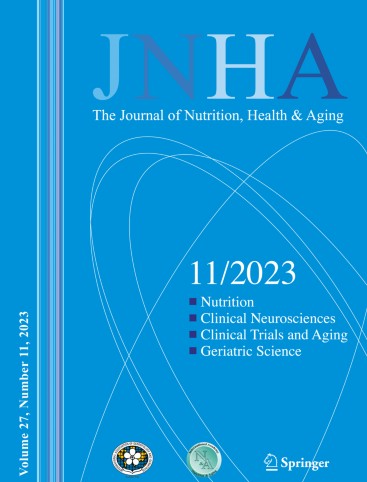健康的生活习惯、受教育程度和英国45种与年龄相关的健康和死亡结果的风险:一项前瞻性队列研究
IF 4
3区 医学
Q1 GERIATRICS & GERONTOLOGY
引用次数: 0
摘要
目的本研究旨在评估生活习惯在多大程度上促进EA与各种疾病之间的关联,并测试不同EA水平下与健康生活方式相关的特定健康状况的风险降低变异性。设计、环境、参与者和测量数据分析来自341,632名英国生物银行参与者,无基线心血管疾病或癌症(2006-2010)。健康的生活方式得分(0-5)是通过给五种习惯中的每一种分配一分来创建的:健康的饮食、充足的体育活动、不吸烟、适度饮酒和低风险的睡眠时间。收集了自我报告和基因型预测EA的基线数据,直到2021年1月评估了45项健康结果。采用Logistic回归模型评估EA与生活习惯之间的关系,并采用Cox比例风险模型检验健康生活方式评分与健康/死亡率结局之间的相关性。适度分析测试了EA是否改变了健康生活方式与健康结果之间的关联,而中介分析估计了生活方式习惯解释的EA与健康结果之间的关联比例。结果自我报告的EA和基因型预测的EA都与健康饮食、不吸烟、低风险睡眠时间和适度饮酒有关,但与低风险体育活动无关。健康的生活方式与45种结果中的38种风险呈负相关,包括心血管疾病、2型糖尿病、肺癌和结肠癌、抑郁症和慢性肾脏疾病,以及心血管疾病和癌症的总体死亡率。较高的EA降低了25种疾病的风险,如心血管疾病、某些癌症、慢性肝病和骨折;在受教育程度较低的人群中观察到更强的反向生活方式风险关联。生活习惯解释了47.2% (95% CI: 35.3-59.4%)基因型预测EA与全因死亡率之间的关联,介导了与心血管疾病、癌症、痴呆、呼吸系统疾病和慢性肾脏疾病的很大比例关联。结论较高的EA可促使人们养成更健康的生活习惯,从而促进健康老龄化。对于EA较低的个体来说,更加重视生活方式的改变对于有效解决与EA相关的健康不平等至关重要。本文章由计算机程序翻译,如有差异,请以英文原文为准。
Healthy lifestyle habits, educational attainment, and the risk of 45 age-related health and mortality outcomes in the UK: A prospective cohort study
Objectives
This study aimed to evaluate to what extent lifestyle habits, contribute to associations between EA and various conditions, and test the variability in risk reduction for specific health conditions linked to a healthy lifestyle across different EA levels.
Design, setting, participants, and measurements
Data were analyzed from 341,632 UK Biobank participants without baseline cardiovascular disease or cancer (2006–2010). A healthy lifestyle score (0–5) was created by assigning one point for each of five habits: a healthy diet, sufficient physical activity, non-current smoking, moderate alcohol consumption, and low-risk sleep duration. Baseline data on self-reported and genotype-predicted EA were collected, with 45 health outcomes assessed until January 2021. Logistic regression models were used to assess the relationship between EA and lifestyle habits, and associations between the healthy lifestyle score and health/mortality outcomes were examined using Cox proportional hazards model. Moderation analysis tested whether EA modified the associations between a healthy lifestyle and health outcomes, while mediation analysis estimated the proportion of the association between EA and health outcomes explained by lifestyle habits.
Results
Both self-reported and genotype-predicted EA were associated with a healthy diet, non-current smoking, low-risk sleep duration, and moderate alcohol consumption, but not low-risk physical activity. A healthy lifestyle is inversely linked to risks for 38 of 45 outcomes, including CVD, type 2 diabetes, lung and colon cancer, depression, and chronic kidney disease, as well as overall, CVD, and cancer mortality. Higher EA reduced risk for 25 conditions, such as CVD, certain cancers, chronic liver disease, and fractures; stronger inverse lifestyle-risk associations were observed among less educated individuals. Lifestyle habits explained 47.2% (95% CI: 35.3–59.4%) of the association between genotype-predicted EA and all-cause mortality, mediating a large proportion of associations with CVDs, cancers, dementia, respiratory diseases, and chronic kidney disease.
Conclusions
Higher EA might encourage the adoption of more healthy lifestyle habits, thus promoting healthy aging. Placing greater emphasis on lifestyle modification is essential for individuals with lower EA to effectively address health inequalities associated with EA.
求助全文
通过发布文献求助,成功后即可免费获取论文全文。
去求助
来源期刊
CiteScore
7.80
自引率
3.40%
发文量
136
审稿时长
4-8 weeks
期刊介绍:
There is increasing scientific and clinical interest in the interactions of nutrition and health as part of the aging process. This interest is due to the important role that nutrition plays throughout the life span. This role affects the growth and development of the body during childhood, affects the risk of acute and chronic diseases, the maintenance of physiological processes and the biological process of aging. A major aim of "The Journal of Nutrition, Health & Aging" is to contribute to the improvement of knowledge regarding the relationships between nutrition and the aging process from birth to old age.

 求助内容:
求助内容: 应助结果提醒方式:
应助结果提醒方式:


